This month, 5writers.com is delighted to welcome guest blogger Sidney Williams. Sidney Williams is the author of numerous traditionally horror and thriller novels and short stories. His work has been released in e-book editions from Crossroad Press.
Horror Writing: Playing An Insidious Game by Sidney Williams
Writing horror is an insidious game, though it’s not because of the body count that’s racked up or because of heads that roll.
Writing horror is insidious because the writer is out to turn the reader or viewer’s own imagination against them.
At least that’s the goal in the creepiest, fear-inducing horror tales. Stephen King notes in Danse Macabre (Everest House, 1981), the basest shock, which he dubs the gross out, can be achieved with one of those severed heads rolling down the stairs.
He labels that more subtle, eerie sort of horror The Terror. It’s the sort of scare that’s much deeper than the gaping wound that forces an audience to wince or look away.
Horror cinema in recent years has seen rewards from a return to those subtle chills, perhaps in part because horror in culture is cyclical, and audiences become jaded to violent extremes. It happened with the seminal splatter films of H.G. Lewis in the ‘60s and ‘70s, which—in spite of then X-rated violence—reached a point of extreme self-parody by 1972’s The Gore Gore Girls.
In recent years, following a cycle of torture horror or torture porn, we’ve seen films such as Paranormal Activity, the Insidious movies and The Conjuring reap huge financial bounties, not by devising new extremes, but by slamming doors in the dark and dropping a few pots here or there.
What constitutes Stephen King’s The Terror? It may be hard to define, but I know it when I feel it.
For me, Paranormal Activity does it when characters place talcum powder on the floor, set up a video camera and later rewind to watch a demonic footprint appear from nowhere. I’m a pretty solid skeptic these days, but on my first viewing of that, alone in my living room with the lights turned down, a chill gripped me and muscles in my abdomen clenched.
No machetes fell. No one bled. Hell, no rubber suit was required. That sudden footprint did more than any of those things could.
It seemed to say: “The world’s not the concrete place you think it is.” Tales from Sunday School and church lock ins and memories of The Exorcist and more re-surfaced.
To recall Stephen King again, he says in Danse Macabre that the knock at the door is scarier than anything the writer can put behind the door.
That Paranormal Activity footprint’s almost as good as the knock in “The Monkey’s Paw” by W.W. Jacobs, which gives the reader the possibility that a son, brought back from the grave, is pounding to be let in. What form does a wished-back-to-life son take post-grave? Perhaps it’s less than pristine. Jacobs wisely lets the reader fill in the details.
He sticks to the unknown, if you will, which H.P. Lovecraft dubbed “the oldest and strongest kind of fear.”
We assume, he noted in his famous essay “Supernatural Horror in Literature” that the unknown is filled with peril.
So, how can that unknown fear be crafted? Let’s turn to some literary examples. It was on the page that the horror genre as we know it really began to take shape. The techniques on display can work for film as well.
While he’s been accused of saying things can’t be described and then describing them anyway, Lovecraft was a master of giving just enough information to dredge up elements from the subconscious, letting the imagination work.
In his last story, “The Haunter of the Dark,” (1936), he pits a hero against a strange creature trapped in an old church steeple. Lovecraft primes the reader with this bit of information:
“There are references to a Haunter of the Dark awaked by gazing into the Shining Trapezohedron, and insane conjectures about the black gulfs of chaos from which it was called. The being is spoken of as holding all knowledge, and demanding monstrous sacrifices.”
Sounds like a powerful creature, though those are just rumors. Still, it makes us start to wonder. Makes the imagination start to work on what it might be.
Of course, Lovecraft’s protagonist finds the stone trapezohedron in the dark, abandoned church and stares into it:
“What was it that the dead man’s notes had said concerning a Shining Trapezohedron? What, anyway, was this abandoned lair of cosmic evil? What had been done here, and what might still be lurking in the bird-shunned shadows? It seemed now as if an elusive touch of foetor had arisen somewhere close by, though its source was not apparent. Blake seized the cover of the long-open box and snapped it down. It moved easily on its alien hinges, and closed completely over the unmistakably glowing stone.
At the sharp click of that closing a soft stirring sound seemed to come from the steeple’s eternal blackness overhead, beyond the trap-door. Rats, without question—the only living things to reveal their presence in this accursed pile since he had entered it. And yet that stirring in the steeple frightened him horribly, so that he plunged almost wildly down the spiral stairs, across the ghoulish nave, into the vaulted basement, out amidst the gathering dusk of the deserted square, and down through the teeming, fear-haunted alleys and avenues of Federal Hill toward the sane central streets and the home-like brick sidewalks of the college district.”
A bad smell and stir of movement, and with the knowledge of what that stone might unleash, the imagination fills that chamber with a dark, writhing other. Doesn’t hurt that our stand-in, the protagonist is clearly having the excrement scared out of him.
So, give the reader or viewer a little information about the potential danger, a judicious amount, then a hint, and the imagination should take it from there.
Lovecraft’s prose is a bit purple for today’s audiences. So, since it’s Halloween time, let’s consider a more contemporary scene from the late Richard Laymon’s Night in the Lonesome October (Leisure, 2002).
His heroes are Ed and Eileen, a passionate college couple, desperate for a quick grope free from prying eyes. They stumble under a bridge near campus into…
“Almost utter darkness.
To our left and right, I could see only black. Straight ahead of us was more black – about thirty feet of it – then a dim gray smudge where the underpass ended and the stream continued on toward the Old Mill a couple of blocks away.”
After a little joking about trolls, Ed Logan, the narrator, notes:
“Under here, the air seemed to have a moist chill and it smelled of old, wet things.
Rocks tipped and rolled under my shoes, scraping together, softly bumping. But I also stepped on soft objects that made squishy sounds. My shoe hit a can and set it clattering. A couple of times, I crunched broken glass.”
No research data here to prime us like “Haunter,” but the scene’s set and it’s vivid—dark, damp, eerie.
In spite of the surroundings, passion overtakes the couple, and they’re soon entwined and lost in the throes of each other’s company. Laymon uses their passion to deftly distract readers, until the lovers are thrown off balance and …
“In a voice that was high and shaky and quiet, she said: `Someone else is here.’”
A few paragraphs later the hero observes:
“Someone in the dark with us, standing so near to us that he could reach up and pull Eileen’s hair … someone so stealthy, so silent, that we’d been utterly unaware of his presence.”
Whoa! Wouldn’t want to be there and wouldn’t want to face anyone hanging out in a spot like that. Trolls indeed.
That scene grabbed my attention the first time I read it in its full context, and it kept me advancing Kindle pages, worrying what else the heroes might encounter. It helped unsettle me, and later incidents kept me off kilter.
Lovecraft and Laymon do essentially the same things in those scenes.
They:
- Set up a dark and spooky place.
- Drop the characters into that spot.
- Offer a hint—just a hint—of something in the dark.
Then the reader’s imagination starts to play, and as the story moves along, reader nor film viewers will get comfortable again, because a seed’s been planted. Deep down, audiences knows the writer might send the protagonist into more shadowy corners where something even worse might wait.
(If you’d like a creative exercise for practice, The Haunter of the Dark can be found here. Look it up and write a quick script adaptation of the hero exploring the church and hearing the creature.)
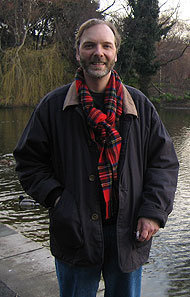

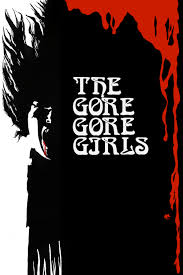
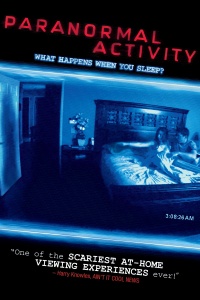
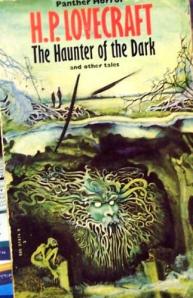
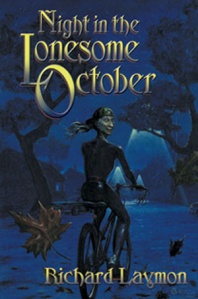
#1 by charlesgramlich on November 2, 2014 - 10:00 am
It is good to see the return of some subtlety. when I go to sleep, it’s imagining the quiet movements that gets me more than the monsters. Of course, I like both. Good post from a good writer.